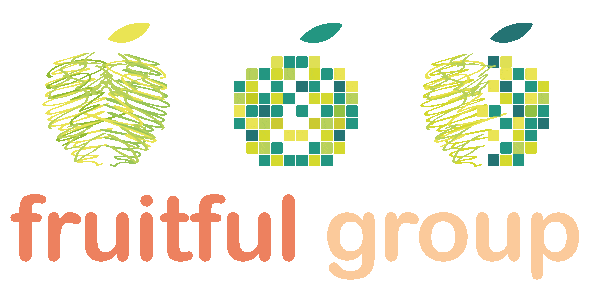Fruitful Decision-Making Framework
- Shelley Tilbrook
- Aug 13, 2020
- 4 min read
Updated: Oct 31, 2023
Every manager and business owner is faced with decisions every day. Two or more alternatives that take them on a different path. Where to allocate resources, spend money and markets or products to focus on.

We've developed the Fruitful Decision-Making Framework for those bigger ones to help you make unbiased decisions that are data-driven. This framework can be useful when comparing which supplier to pick, which product to invest in or where to locate your business. And we've made it easy to remember with the acronym, F.R.U.I.T.F.U.L.
“Whenever you see a successful business, someone once made a courageous decision.”
― Peter F. Drucker ―

So here's our framework that supports our decision-making process for us and our clients by providing evidence to build confidence, remove bias and eliminates paralysis by analysis with a rating system that will decide the best alternative for you.
CRITERIA 1
F for Form & Function
What it does and how it looks

This is where you compare and evaluate the alternatives in relation to what is does, how it functions, how it looks and how it meets your brief or specific requirements for you or your client.
Try to include as much detail on each alternative as possible with comparative features.
Then, with an example of three alternatives give the best a rating of 3, the second a rating of 2 and the third a rating of 1. If two options are equally, you can rate them 3, 3, 1 or 3, 1, 1 accordingly.
CRITERIA 2
R for Revenue & Profit
What is the revenue potential

Sustainable decisions will always have the ability to generate or attract income. This second criteria is a commercial one in regards to how much money it can make you.
Here you want to investigate what revenue channels exist or can be created, the size of the opportunity and also to consider ownership or IP rights that will be beneficial when you scale.
Ideally you should be able to place a numerical value against each option here as well and an idea of profit margin to see the NET result.
Then complete the same rating system as outlined above.
CRITERIA 3
U for Upfront and Ongoing Costs
The total cost comparison including operational costs

A cost comparison should identify all upfront costs and ongoing operational costs include costs when you scale.
Is it within your budget? Can you afford them or find financial support for them.
This will allow you to compare and evaluate the true costs without being swayed by set up costs only.
It is important to ensure the costs are comparable so again detail is the key, particularly if you are comparing proposals and not all quality is the same and the most expensive is not necessarily the best, nor is the cheapest.
Then complete the same rating system as outlined above, generally with the lowest to highest cost to compare.
CRITERIA 4
I for Impact
What impact can this decision make?

If you adopt this solution or decision, what impact can you generate? It is aligned to your strategy and purpose? Does it improve people's lives, social, political, economic or environment?
Here you need to evaluate what is the reach, how easy is it to scale and what are the outcomes you expect to achieve for yourself, your business, your brand, your clients, your end user, your image whichever is relevant.
Is this solving a major problem or improving a small issue? Is this breaking down a major barrier or making a solution easier. The greater the impact, the better the result.
Impact can be hard to measure and compare and much of it is done on forecasting and predictions, however if you include consistent measurable units you will start to see a clear winner to complete the rating system 3, 2, 1.
CRITERIA 5
T for Trust, Testimonials and Timeframe
Evaluate the product service provider or supplier

You've heard us say before, you do business with people you know, like and trust. The same is true for suppliers you choose to work with and products and brand that customers choose to buy.
For this criteria you should be looking at expertise, reputation, success rates and delivery timeframes.
Seek out testimonials or consumer feedback. Do your research as the quality of the decision is only as good as the quality of the data.
The rate each of the alternatives 3, 2, 1.
“Decision making and problem solving are not the same. To solve a problem, one needs to find a solution. To make a decision, one needs to make a choice.”
― Michael J. Marx ―
At this point you may have a clear winner, but for a thorough analysis, we recommend comparing the final three steps F.U.L.
CRITERIA 6
F for Future Roadmap
Evaluate the longevity of this solution

If you take this option, what will the future roadmap look like? Does it align with your long-term strategy?
Evaluate product rollout, long-term relationships, potential improvements and upgrades.
If you can't see future improvements, then this is a short-term solution.
Continuous improvement is regarded highly for all solutions because if you are standing still, you will eventually be overtaken. Having a flexible solution that can adapt with new technology.
Rate the options 3, 2, 1.
CRITERIA 7
U for Unicorn Strategy
Compare engagement, downloads, conversion

A unicorn strategy is one which gets the results you want and then some. If you take this option, is it the best option for engagement, downloads, customer conversions?
Is taking this option placing you as an industry leader? Will this help you scale your business and take it to another level?
Compare the options 3, 2, 1.
CRITERIA 8
L for Leverage
Publicity, Promotion, Amplification

Does this solution provide publicity potential, promotion opportunities or amplification through partnerships, platforms or personalities.
The greater the leverage, the faster the opportunity is to turn a profit, scale, improve a reputation or dominate a market segment.
If the opportunity places you in a innovative light, is transformational or world-first, then publicity is definitely on the cards.
Rate each option 3, 2, 1.
Do you have a clear unbiased winner on paper?
Now tally all the numbers up for each option. Do you have a clear winner (the highest number)? If not, or your top two choices are very close, you can try a 1 - 10 rating system (10 highest, 1 lowest) to see if the scale changes the order or separates the top two choices.
You can download the worksheet and template here
“Not making a decision means forgoing an opportunity.”
― Auliq Ice ―




Comments